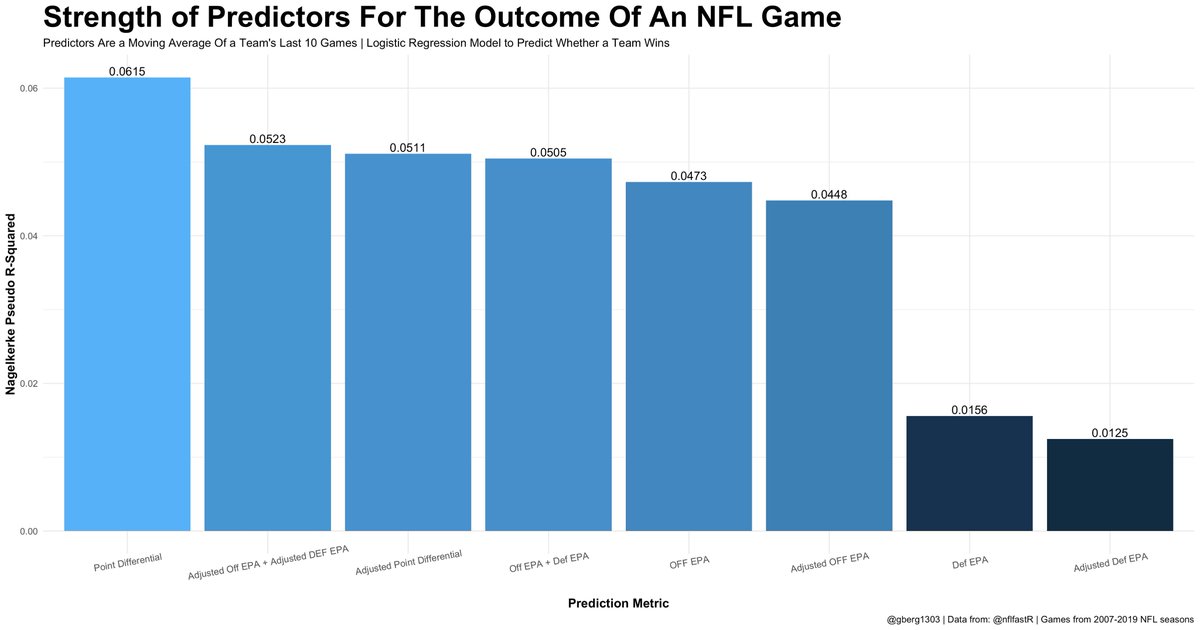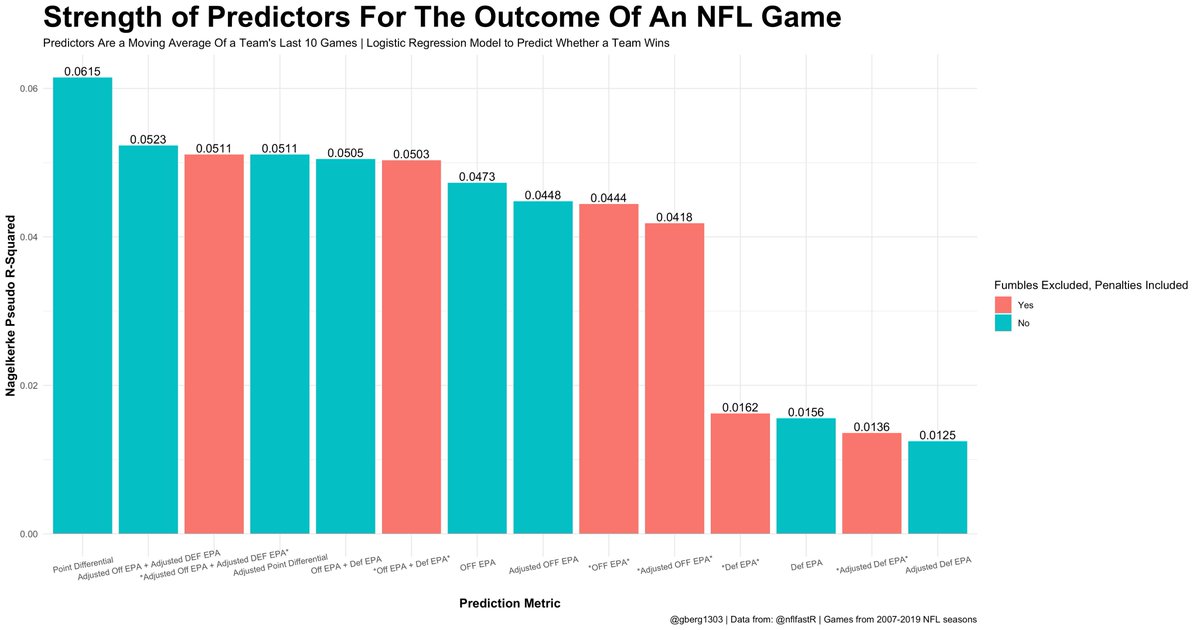Here& #39;s a closer look at how well a team& #39;s adjusted EPA/play can predict a given matchup. Interestingly, @nflfastR& #39;s base EPA/play is better until both the off and def EPA/play are used together. Adjusting EPA/play based on teams& #39; past opponents creates an edge in complex models.
Point Differential remains the strongest predictor, and its combination with a team& #39;s adjusted Off EPA/play and Def EPA/play helps create a strong model. You can read more about how well those three statistics can predict games in this thread: https://twitter.com/gberg1303/status/1281010331746271233?s=20">https://twitter.com/gberg1303...
Following a couple other suggestions, I looked into whether excluding fumbles (currently included) and including plays with penalties (currently excluded) adds predictiveness.
In almost all cases, it does not. Defensive EPA metrics are the exception.
https://twitter.com/benbbaldwin/status/1281019632560857089?s=20">https://twitter.com/benbbaldw...
In almost all cases, it does not. Defensive EPA metrics are the exception.
https://twitter.com/benbbaldwin/status/1281019632560857089?s=20">https://twitter.com/benbbaldw...
I& #39;m not sure why the adjustments to a team& #39;s EPA/play show their strength only when off and def are combined, but the logic behind the additional predictiveness they provide is sound.
For now, the logic and the accurate results warrant their use.
For now, the logic and the accurate results warrant their use.
tl;dr:
Adjusting EPA/play for the strength of a team& #39;s opponent (as measured in their EPA/play) can make the predictor stronger.
Including plays with fumbles and excluding plays with penalties works better than the inverse.
code: https://github.com/gberg1303/Random/blob/master/Adjusted%20EPA%20Predictiveness/Adjusted%20EPA%20Predictiveness_v2.R">https://github.com/gberg1303...
Adjusting EPA/play for the strength of a team& #39;s opponent (as measured in their EPA/play) can make the predictor stronger.
Including plays with fumbles and excluding plays with penalties works better than the inverse.
code: https://github.com/gberg1303/Random/blob/master/Adjusted%20EPA%20Predictiveness/Adjusted%20EPA%20Predictiveness_v2.R">https://github.com/gberg1303...

 Read on Twitter
Read on Twitter



